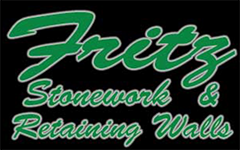
Nov 25, 2020 | custom stonework, fall outdoors, lanscape company, outdoor cleaning, patio pavers, pavers, retaining wall
Stone structures such as retaining walls and outdoor living spaces are extremely durable, long lasting investments. However, like most things around your house, stonework needs a little bit of maintenance if you want to keep it in the best condition. What you specifically need to watch out for is any degradation to your stonework that could be caused by the changes that Winter and Fall bring. With that in mind, you’ll need to know how to properly protect and clean your stonework as we enter into that season.
Protect Your Stonework by Removing Leaves and Debris
Trees around stonework can create a beautiful effect. However, if leaves, twigs, and branches are left on stone for too long you could find more than just an aesthetic problem come Springtime. If you leave organic matter on stonework, a couple of potential problems can arise. As the leaves begin to decay, mold and mildew form, which can lead to moisture and dirt getting trapped in the mortar or staining the stonework itself. Moisture will work its way into the mortar and won’t be able to escape if heavy amounts of leaves remain on the stonework. The next time a freeze hits, that moisture will expand in the mortar and could lead to structural problems with your stonework patio or retaining wall.
Clean Your Stonework to Ensure That They Last
After you have removed any organic material that might have fallen onto your stonework, it’s time to clean. Cleaning stonework requires time, patience, and proper knowledge of how to do it safely. Improper cleaning can lead to aesthetic and structural problems with your stonework. Following industry guidelines is recommended.
Stonework Cleaning Process:
- First you are going to inspect your stonework for damage. If there is substantial damage to either stonework or mortar, consider calling an expert before attempting a repair or cleaning the area. Improper cleaning of deterioration or cracks can lead to further issues with your stonework. Avoid cleaning structural damage if you aren’t an expert.
- Begin cleaning with water in a small inconspicuous spot. If this cleaning is to your satisfaction continue onto larger areas.
- Only use gentle water pressure when cleaning stone or mortar. Pressure washing can remove mortar easily. Only use a pressure washer on a low setting while constantly moving the nozzle.
- If cleaning with water alone is not enough, you can add a mild detergent to a water mixture. Additionally, use a soft nylon brush to spot clean trouble areas, such as discoloration or encrustation formations.
- If you are still not satisfied with your cleaning progress, there are specific chemicals and abrasive cleaners for stonework available. Please use caution and consider calling an expert if this step becomes necessary.
If you have followed these steps and feel that your stonework could use expert care, look to Fritz Stonework and Retaining Walls. Hiring a professional can save you time and money in the long run. Stonework maintenance is often something homeowners can take care of themselves, but if you ever feel you could be doing more harm than good, it’s time to call Fritz Stonework and Retaining Walls. Call 636-861-1530 for service in the greater St. Louis area or learn more about Fritz Stonework here.
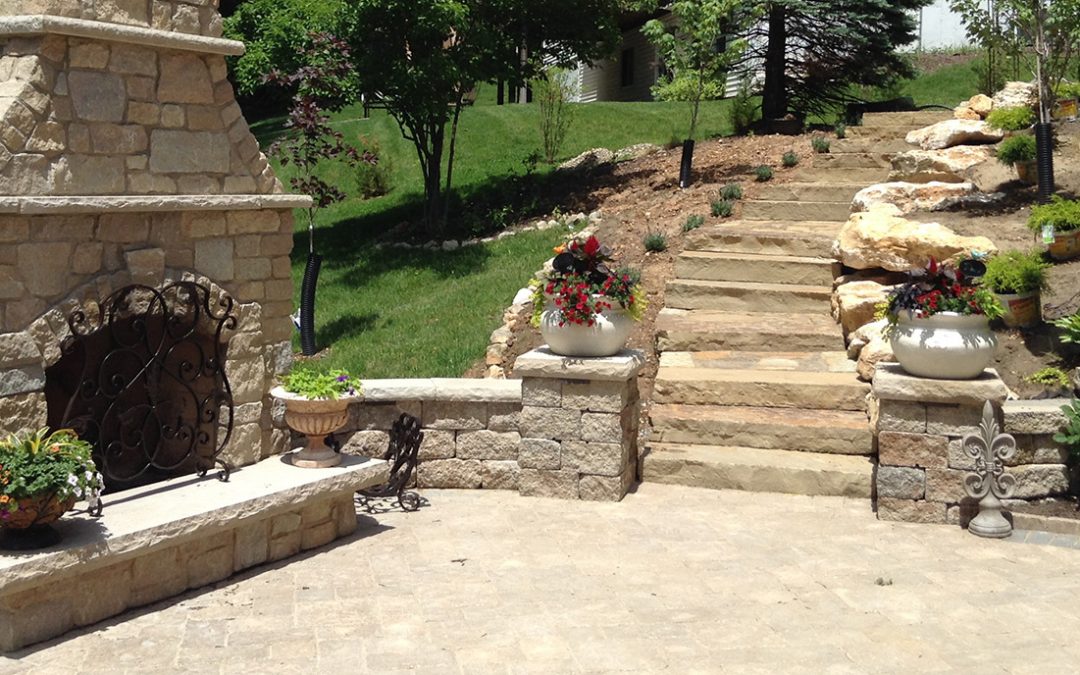
Nov 14, 2020 | custom stonework, fall outdoors, fall patio, fire pit, firepit, hardscape, home appeal, landscape, landscaping, lanscape company, outdoor fireplace
Stonework outdoor spaces have long been held in high esteem for their durability, added value to a home, and, most importantly, the beautiful gathering place it makes for family and friends. During COVID-19, there has been a dramatic rise in home improvements. As people spend more and more time at home, they have seen the need to adapt their homes into more than just a living space. A home can be a destination in itself. A place to entertain family and friends without the need for going to a restaurant or a bar. Stonework such as patios, walkways, and fire pits can give your home that extra touch that makes your family and friends feel as though they are visiting a destination rather than someone’s home.
Why Should I Choose Stonework for My Outdoor Space?
Stonework is long lasting and has a timeless appeal to it. Where wood degrades and styles change, stonework will endure and have lasting appeal long past current trends. Here are four reasons why stonework is the best choice for updating your outdoor living space.
- Low Maintenance: There’s very little maintenance to be done with stonework patios, walkways, and fire pits. If installed correctly, stonework not only last for decades, it will look good for decades. Stonework keeps its appearance throughout the years with basic maintenance that most homeowners can accomplish. Simply keep leaves, twigs, branches, and other organic material from accumulating on your stonework. Keeping organic material from decaying on your stonework prevents any discoloring on the stones and prevents moisture from entering into the mortar.
- Weatherproof: Stonework performs well in any season and looks the same all year. Where wooden deck will expand and contract with the seasons, stonework does not move seasonally. Where ground contact will eventually rot even pressure-treated lumber, stonework will not rot. A stonework patio will also never get blown away in a tornado or in strong winds like a wooden deck can. The weight of stonework, and it being flush into the ground, prevents wind from ever uprooting your investment.
- Design: Stonework comes in a variety of styles and colors. Expert stonework installers can help you decide on a design that fits your home and needs. Merging stonework pathways, patios, and fireplaces can seem like an impossible task to a homeowner, but experienced professionals can help bring your dream backyard alive.
- Adds Value to Your Home: Stonework is one of those few investments that you can make to your home that will age gracefully. The material itself is permanent and the aesthetic of stonework never goes out of style. If you ever decide to sell your home, buyers will pay more for a home that has a stonework outdoor space. Stonework won’t be a liability if you go to sell your home like a decaying and dilapidated wooden deck would be. But the “value” of an outdoor space doesn’t have to be solely in its resale value. If you decide not to sell your home, you still have the value of an outdoor space that you, your friends, and your family can benefit from. You might find yourself spending more time outside enjoying the fresh air and the people important to you.
COVID-19 isn’t stopping others from getting the most out of life at home. In a season where home improvement is on the rise, make your home improvement one that lasts. Choosing stonework for your patio, walkway, or fire pit is an improvement that you won’t come to regret. Choosing trusted professionals in the industry is just as important as making the right choice in your home improvement options. Serving the greater St. Louis region for over 30 years, Fritz Stonework and Retaining Walls is the best choice if you’re considering updating your outdoor space. Call Fritz Stonework at 636-861-1530 or learn more about Fritz Stonework here.
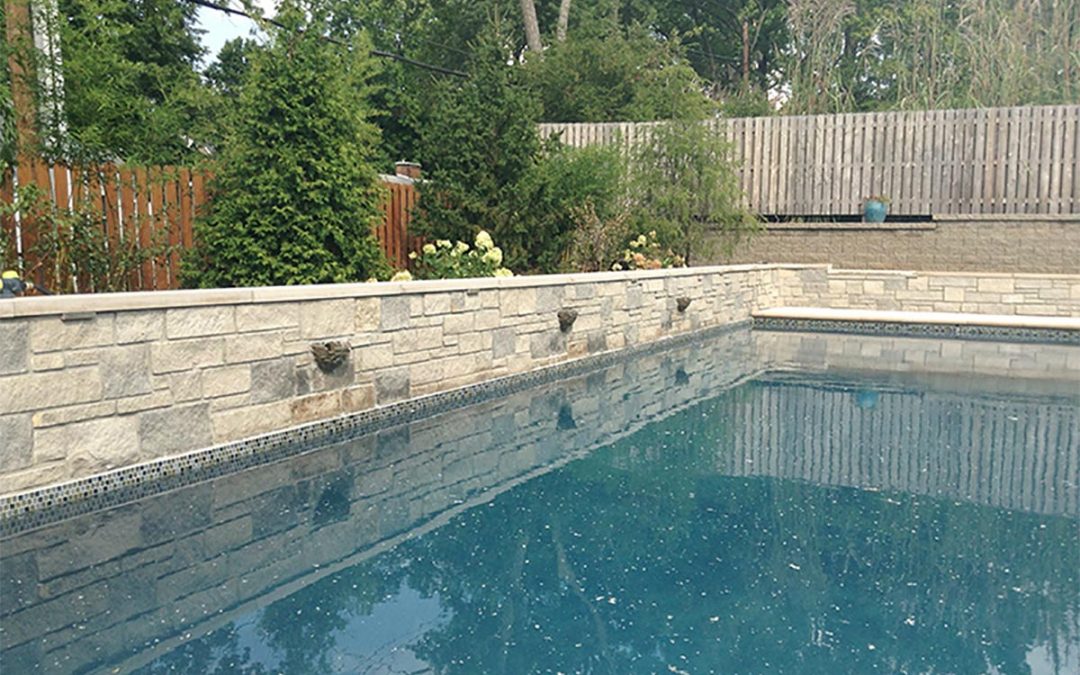
Oct 25, 2020 | landscape, landscaping, lanscape company, natural landscape, retaining wall
When it comes to landscaping, what comes to mind? Do you think of a beautiful garden full of bushes, flowers, concrete statues, and a small coy pond? All of those are great ideas to make your home look appealing. However, did you ever think about retaining walls? That’s probably the last thing you would ever think about, but they are a very important part of your garden. Retaining walls help keep your garden looking gorgeous by providing strength, preventing erosion, controlling rainwater runoff, and creating terraced levels for your garden beds.
Retaining walls can also make your property look effortlessly stylish no matter what style you choose. Therefore, it is a good thing there are so many options to choose from that can fit your budget and taste!
Concrete Retaining Walls
- White concrete creates a classic look and can make your green grass stand out. It is a simple choice but it is also elegant and would look great with a color scheme of neutrals, blues, and greens.
- Smooth concrete is a more modern choice and will give your home the edge you are looking for. It also creates a blank canvas so you can add as much greenery or flowers that you would like to, making your own garden sanctuary.
- Shotcrete rock face is simply used to describe sprayed concrete. Shotcrete rock face come in a multitude of colors ranging from standard grey to warm sandstone or clay colors that create a natural rock look.
- Concrete blocks is a bold choice when you need a strong solution. Concrete blocks prevent erosion on large properties; however, this can look unsightly so include levels and greenery to prevent this from happening.
Stone Retaining Walls
- Cut stone provides you with the opportunity to incorporate different types of stones to suit your taste. They are also last a long time so you do not have to worry about updating often.
- Round rocks add texture and shapes to your garden or backyard. They provide support to your steps, garden beds, and other features around your house.
- Sandstone is a good choice if you are wanting a more formal retaining wall. This is a classic choice that is not only practical but also serves as a feature piece wherever you use it.
- Grey blocks are a practical solution and can make a lasting impression. Use grey stone blocks to create steps leading up to your front door and you’ll create an impressive sight.
- Large blocks create a bold statement by using large, rough unstructured rocks. This natural look will easily blend in with your outdoor environment.
- Stone veneer is a great choice when you are on a budget and looking to create something more luxurious. This type of retaining wall uses stone placed over the top of other foundational materials such as brick.
Timber Retaining Walls
- Timber gives a nice, sleek look; however, if you’re looking for longevity then it might not be the choice for you. Naturally durable types of hardwood timber include tallow wood, ironbark, grey gum and forest red gum. These types of hardwood timber are naturally resistant to termites and can last up to 25 years.
- Timber sleepers are a rustic type of retaining wall. You will want to use older pieces of timber that has been treated or timber that has been stained or sanded to add character. It is a great choice for any home but especially for a country-style home.
Brick Retaining Walls
- White brick allows for you to add a little detail but still keep your color palette simple yet tasteful.
- Red brick is a classic choice and when adding white grout, you really make the bricks stand out. This will look great in any area of your home and can easily be complimented with greenery for a remarkable look.
Retaining walls play an important part in the landscape of your yard. There are many options to choose from and it can become overwhelming. Let the experts at Fritz Stonework & Retaining Walls help you decide which option is best for you and which one suits your style. Call us today to learn more about our retaining wall services and how we can help you.
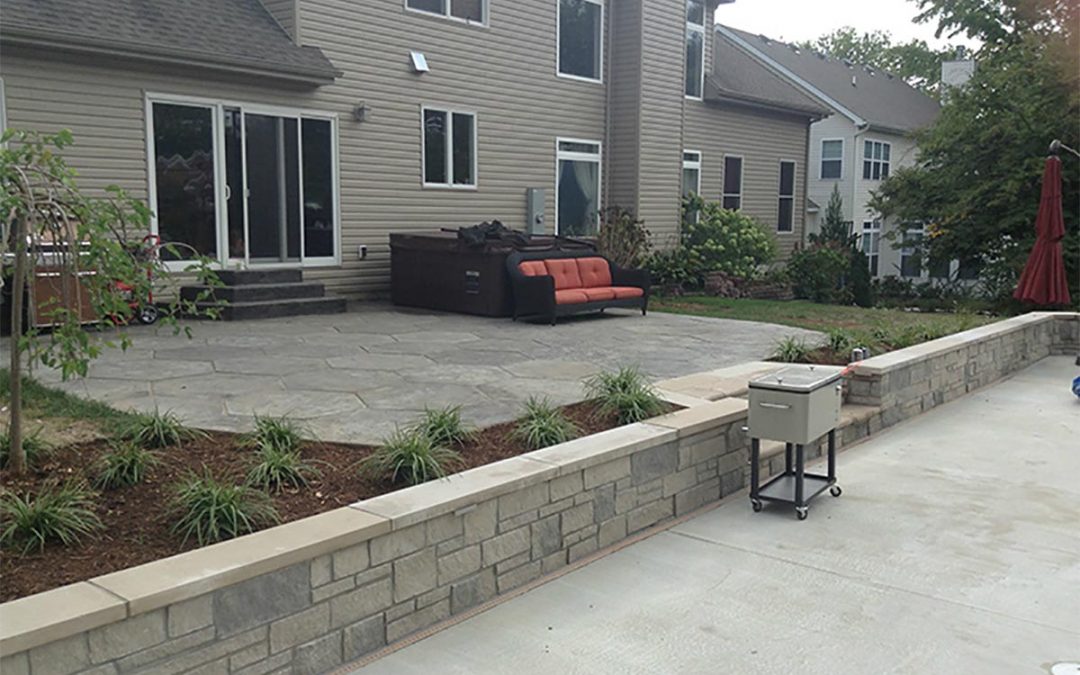
Oct 14, 2020 | fall outdoors, fall patio, fire pit, firepit, fireplace, hardscape, home appeal, landscape, landscaping, lanscape company, masonry, outdoor fireplace, patio
For some people, the fall and winter seasons are a nice welcoming change to the hot summer temperatures. However, what comes along with fall and winter is weather that includes moisture, such as rain and snow. For as long as structures have been in existence, moisture has been the main cause for its deterioration. Moisture in all forms affect how well the building materials function.
The way masonry systems are designed should prevent the intrusion of moisture into the building’s interior. It should also keep the building’s structural components safe. If there is any structural break, then your building could be compromised. Masonry units that are made poorly are among the most common failure points. These include mortar joints, hairline cracks, parapet, and door and window details. Water can also come through by vapor condensation and can enter the structure as a result of poor work. The lack of proper drainage can exacerbate the impact of any type of moisture that makes its way through; therefore, creating major damage to the building.
Structural Problems
When unwelcome moisture seeps through, masonry units and mortar can crack. Thermal expansion can be a result when water gets into brick, concrete, and natural stone. Thermal expansion can cause the surface to peel, pop out, or flake off. This is also known as spalling, which is caused by too much moisture in the masonry that puts pressure outward. Spalling can ultimately result in large sections of the masonry to crumble and fall off, which will lead to structural damage.
Too much moisture cam also result in the wall rotting, which is very unaesthetic and an unhealthy condition. The insulation can also disintegrate along with staining of the interior finishes. Other effects may include the deterioration and/or corrosion of the wood/steel backup studs, cladding, ties and reinforcements. If this is left unattended to, the excess water can cause an increase and spread of additional structural degradation and complete structural failure.
Aesthetic Degradation
When there is excess moisture seeping through the masonry, efflorescence is a main problem. Efflorescence is a white, powdery, crystalline deposit that forms on the surfaces of masonry, stucco, and concrete. Efflorescence is caused when salt within the masonry unit itself has been dissolved due to too much moisture and has made its way to the surface of a porous material. It then forms the white, powdery, crystalline deposit as the water evaporates.
In order for efflorescence to happen, three problems must be present.
- There has to be water-soluble salts somewhere in the wall
- There must be enough moisture in the wall to render the salts into a soluble solution
- There must be a way for the soluble salts to move their way through to the surface so the moisture can evaporate, getting rid of the salts so they can crystallize causing efflorescence
Just because sulfates may be present in a masonry wall, it does not mean efflorescence will occur. The sulfates must be dissolved by water in order for it to happy. If there is no moisture then the sulfates will not find their way to the surface. However, there are certain conditions that will aggravate the possible creation of efflorescence. For example, if a block is exposed to cold, rainy weather during storage or if the structure has been poorly designed in regards to drainage and moisture control, then efflorescence is more likely to occur.
Health and Safety
Too much moisture can cause bacteria to grow which can create new odors or worsen current ones. The effects of growing bacteria can cause existing conditions to become worse, such as asthma and allergies. These bacteria have also been known to cause cancer and birth defects.
Managing moisture is a top priority when designing and building, especially here at Fritz Stonework & Retaining Walls. It is important to us that you and your family are safe from any potential harm. We work hard to make sure your masonry is up-to-par and lasts for many years to come. Contact us to today at (631) 861-1530 so we can help you create your masterpiece.
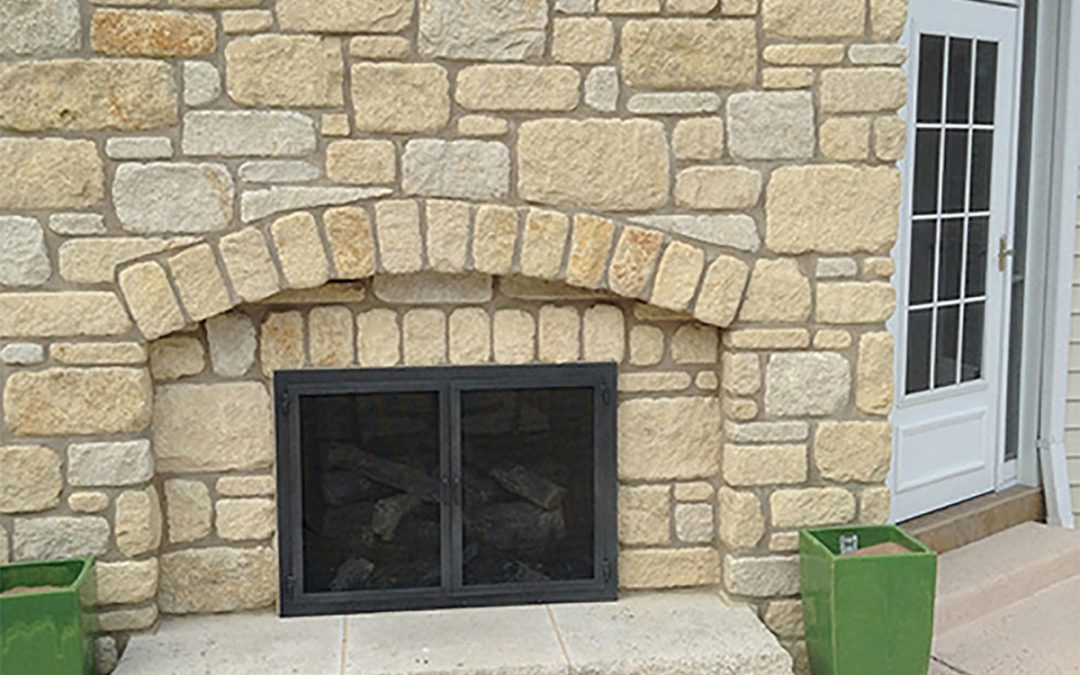
Sep 25, 2020 | hardscape, home appeal, lanscape company, masonry, mortar, motar
Have you ever asked yourself what exactly is stone masonry and if it is something you would want to add to your outdoor living space? Stone masonry is described as the shaping of rough pieces of rock into accurate geometrical shapes and then arranging the results together using mortar to form structures. This technique dates back thousands of years and uses basic tools such as a metal straight edge, mallet, and chisels.
There are a variety of different techniques that are used in stone masonry. These techniques have advanced along with changes in the way people live and the modernization in construction.
Traditional Dry-Stack
With the dry-stack technique, walls are layered up with stone without mortar joints. Gravity is what holds everything together. Dry-stacking involves little expense except for the labor. The standing stone wall is usually made large at the bottom and becomes thinner as it gets higher.
Advantages
– Attractive, strong, and can last hundreds of years
– Shows traditional character
– Environment-friendly
– Can be re-used multiple times
– Unlike a brick wall, the life of the stone structure is long-lasting
Disadvantages
– The cost of labor is high and the construction is slow and costly
– An improper structure can lead to the collapse of the property
– Not a good fit for high walls or buildings
Traditional Mortared Stone Technique
In this technique, the foundation of the wall must be solid so the joints do not crack easily. To make sure the joints do not crack easily, a paste made of lime and water is used which helps bond the materials together.
Advantages
– Concrete block is more resistant to weather, pest, molds, and fire
– Materials for concrete blocks is locally available
– Concrete blocks are good insulation against heat, sound, and moisture
Disadvantages
– Due to their weight, concrete blocks are hard to handle and involve more workforce
– A large quantity of steel is needed to reinforce cement concrete structures
– The issues of plumbing in concrete masonry structures are difficult to solve
Modern Veneered Stone Technique
Most stonework these days consists of a non-structural veneer stone against a structural wall of the concrete block. Concrete mortar includes Portland cement mixed with sand, gravel, and water. When using the veneered stone technique, the large particles of gravel are interlocked like little finger to make the concrete long-lasting.
Advantages
– Less expensive
– Longer life when installed correctly
– Provides natural beauty on the exterior of your home
– Perfect for walls that do not need extra support
– Lightweight
– Come in larger panels which allows for easier installation in a shorter amount of time
– Low maintenance
– Can be used on different surfaces such as stone, metal, and wood
Disadvantages
– Allows moisture to come through the joints which can cause mold issues
– Incorrect installation could lead to breaking and chipping
– Abrasive cleaning material can damage the surface
Slipform Stone Technique
This technique is known as a cross between the traditional mortar stone wall and a veneer stone wall. Natural stones are used and placed inside the forms with the presentable side faces against the formwork. The concrete is then poured behind the rocks.
Advantages
– Decreases the use of building cranes
– There is less use of accessories such as scaffolding, support bars, and platforms
Disadvantages
– Involves high costs in the beginning stages
– Highly skilled experts and hi-tech equipment are needed
Framed-One Side Stone Technique
Framed-one sided stonemasonry is more obvious on building with stone on the outside and the framed wall on the inside. Half the formwork is done when the interior frame is built first. This type of stonework is a traditional way of masonry and creates strong, beautiful walls that are built with the strength of the stone, reinforcement of concrete and steel.
Advantages
– Less time taken in the construction than with other techniques
– Comparatively lesser costs involved in workforce and materials
– Strong and good-looking walls that are built with masonry stones
Disadvantages
– Causes lateral deflections
– The span length is much less
Tilt-Up Stone Technique
This technique is done by pouring stone walls flat on the ground and then setting them in place using a crane. Stone, sand, gravel, and rock materials are used for the tilt-up stone technique.
Advantages
– More economic than cast-in walls mason stones
– Hazards are much less
– Faster and safer installation
Disadvantages
– Can’t be used for complex building wall
– Lack of versatility
There are all types of techniques that can be used in stone masonry. Choosing the right technique for your needs may be overwhelming and confusing. Contact us at Fritz Stonework and Retaining Walls today so we can help you create a masterpiece that you will enjoy for years to come.

